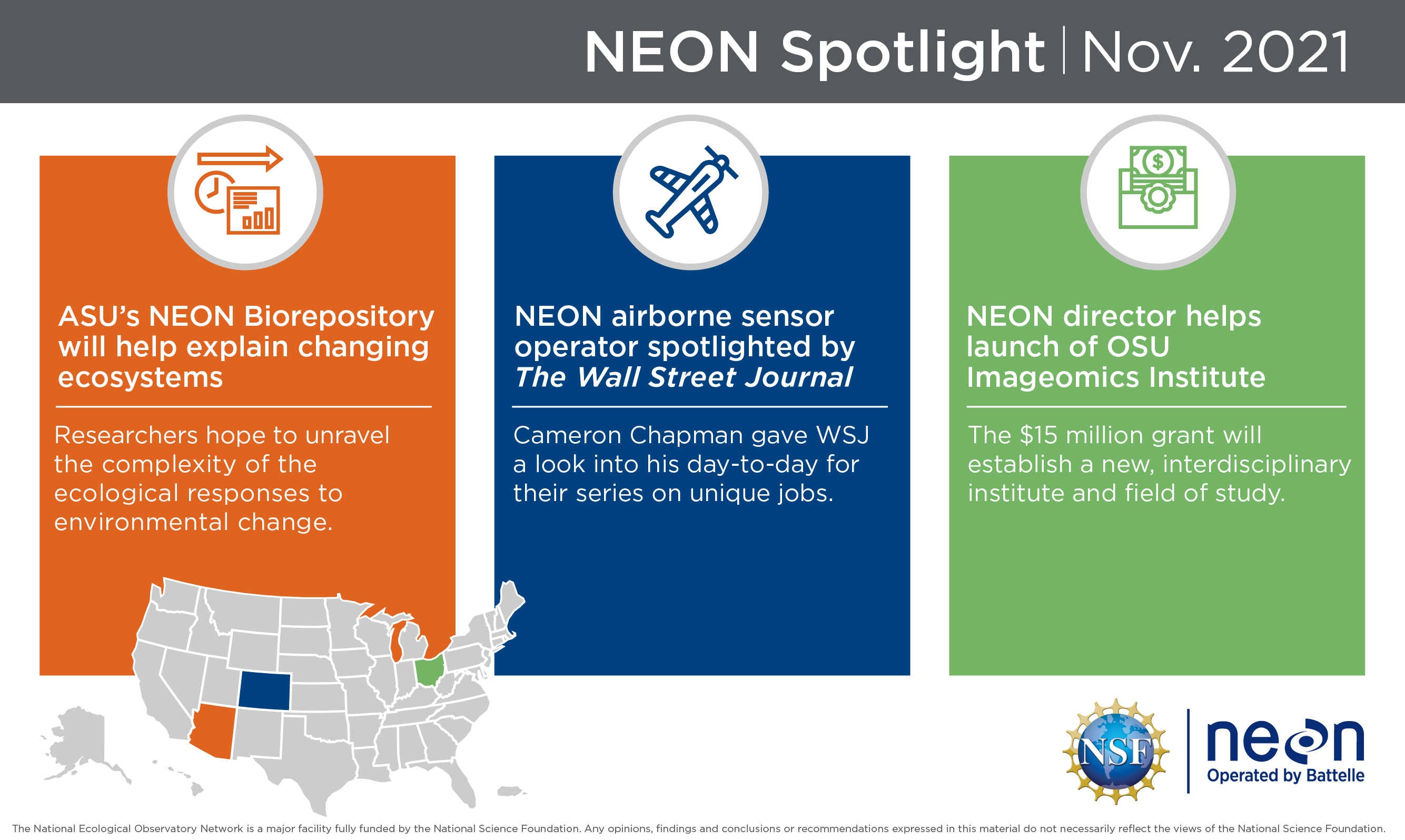November 2021: What’s New with NEON?

For our November edition, we’re continuing to highlight the multitude of ways NEON data is pushing the boundaries of current ecological research. This month’s collection of scientific advances includes a look into the day-to-day job of a NEON airborne sensor operator, Ohio State University creating a new institute for imageomics with support from an NSF grant, and a closer look at the crucial role of Arizona State’s NEON Biorepository in improving our understanding of the interaction between climate and nature.
This Month’s Spotlight
The latest news from NEON includes:
- NEON airborne sensor operator Cameron Chapman gave The Wall Street Journal a behind-the-scenes view into his daily life as part of a series on unique jobs. Cameron’s day-to-day consists of flying a plane filled with technical sensors to collect ecological and geographical data from various ecosystems. He and his colleagues map how environments change over time to help researchers answer important questions, such as how biodiversity is evolving, how a forest recovers after a wildfire, or what role minerals play in soil-based carbon storage.
- Ohio State University was awarded a $15 million grant from the National Science Foundation to lead the creation of a new, interdisciplinary institute called the Imageomics Institute. It will also establish a new field of study, imageomics, that could transform biomedical, agricultural, and basic biological sciences by utilizing machine learning to extract biological traits from images, like behavior, physical appearance, or a species’ distinguishing skeletal structure. Paula Mabee, NEON’s Director, is key personnel on the grant. “So many pictures of organisms exist with scientific value that we’ve been unable to analyze at the right scale,” said Tanya Berger-Wolf, faculty director of the Translational Data Analytics Institute and principal investigator for the Imageomics Institute. “This will change how we are able to see and understand the natural world. Computers help humans ‘see’ images differently and expose what we may otherwise miss.”
- ASU’s NEON Biorepository is an open-access ecological data repository that researchers hope will help them unravel the complexity of the ecological responses to environmental change. Started in 2018, it houses 70 types of samples with more than 100,000 total samples collected each year. By the end of the project, 3 million samples will be stored in the Biorepository. Researchers are already using the repository’s resources, with samples currently loaned out to 22 active projects. "Every specimen or sample that we get from NEON has an online record that anyone can look at what all of the specimens we have here are," said NEON Biorepository project manager Kelsey Yule. "They're doing this project in order to allow researchers this really big, standardized set of data over the next 30 years, so they can look at how they're changing over space and organisms and in Arizona."
Sponsored by the National Science Foundation (NSF) and operated by Battelle, NEON is a continental-scale ecological observatory network dedicated to providing high-quality, consistently generated, standardized data that is free and available to all users. By enabling scientists, researchers, and students to address critical questions and understand ecosystem changes over time, the NEON program allows the ecological community to tackle questions and problems at a scale that was not possible before.
You can read about the latest work and research in the NEON Spotlight every month at Inside Battelle, and on our social media channels. For more information about NEON, visit NEONscience.org.
BATTELLE UPDATES
Receive updates from Battelle for an all-access pass to the incredible work of Battelle researchers.